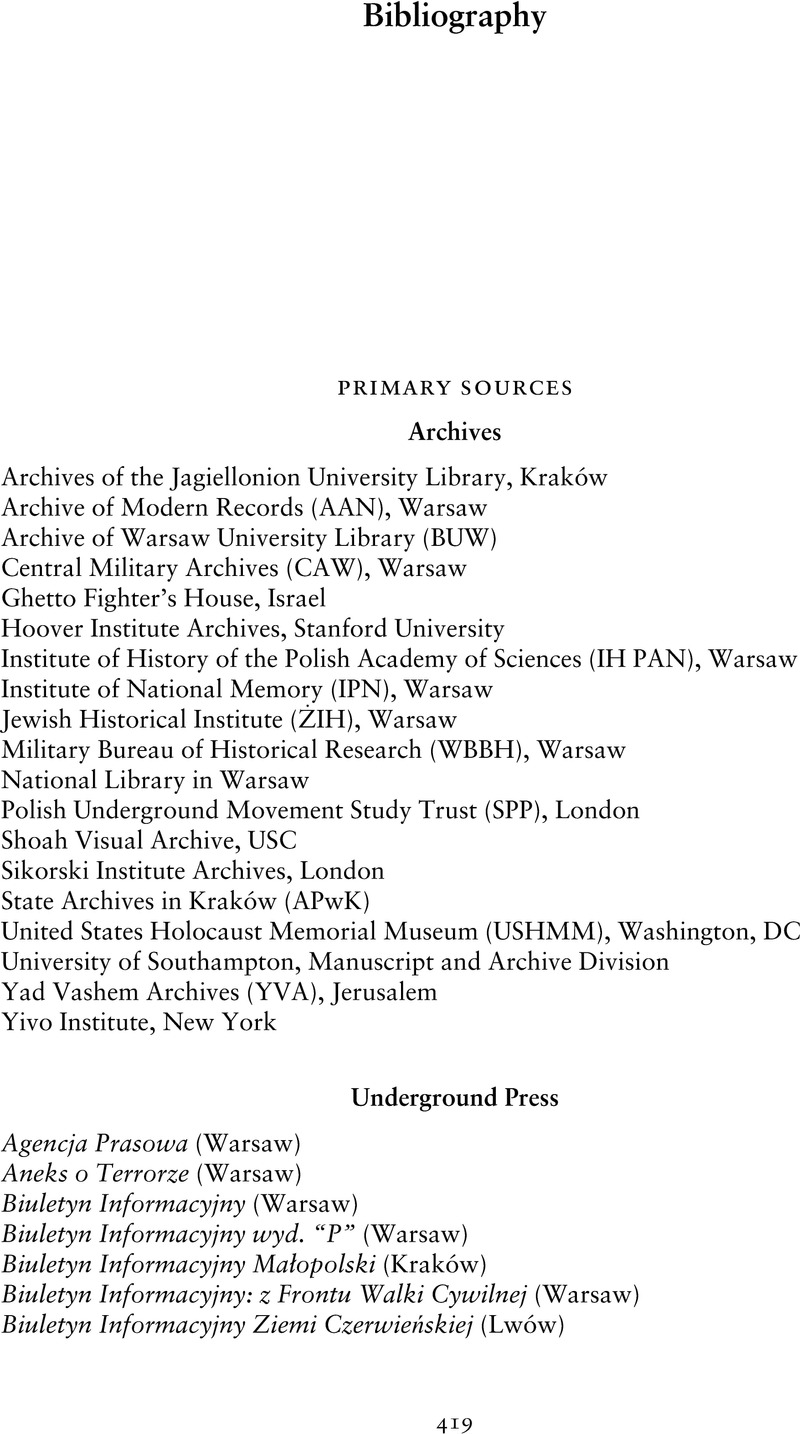Book contents
- The Polish Underground and the Jews, 1939–1945
- The Polish Underground and the Jews, 1939–1945
- Copyright page
- Dedication
- Contents
- Maps, Charts, Figures, and Tables
- Abbreviations and Terms
- Acknowledgments
- Note on Terms and Figures
- Frontispiece
- Introduction
- Part I The Polish Underground and the Jews during the German-Soviet Partition, 1939–1941
- Part II The Polish Underground and the Jews under Nazi Rule, 1941–1945
- Bibliography
- Index
- References
Bibliography
Published online by Cambridge University Press: 05 June 2015
- The Polish Underground and the Jews, 1939–1945
- The Polish Underground and the Jews, 1939–1945
- Copyright page
- Dedication
- Contents
- Maps, Charts, Figures, and Tables
- Abbreviations and Terms
- Acknowledgments
- Note on Terms and Figures
- Frontispiece
- Introduction
- Part I The Polish Underground and the Jews during the German-Soviet Partition, 1939–1941
- Part II The Polish Underground and the Jews under Nazi Rule, 1941–1945
- Bibliography
- Index
- References
Summary

- Type
- Chapter
- Information
- The Polish Underground and the Jews, 1939–1945 , pp. 419 - 436Publisher: Cambridge University PressPrint publication year: 2015

